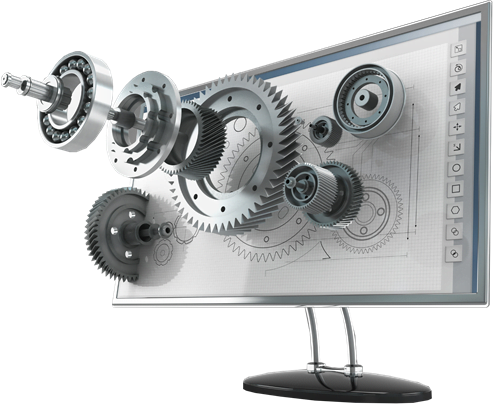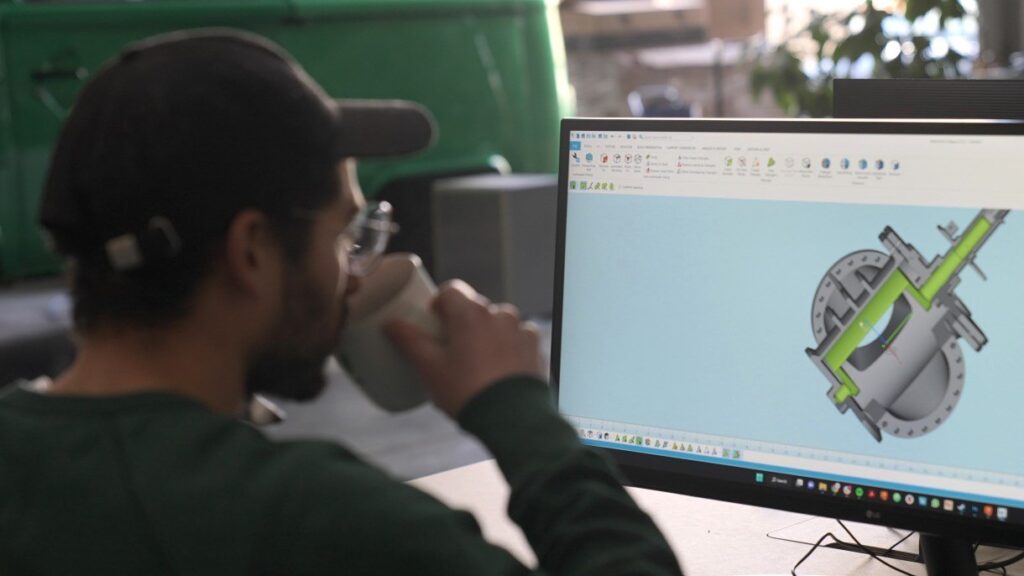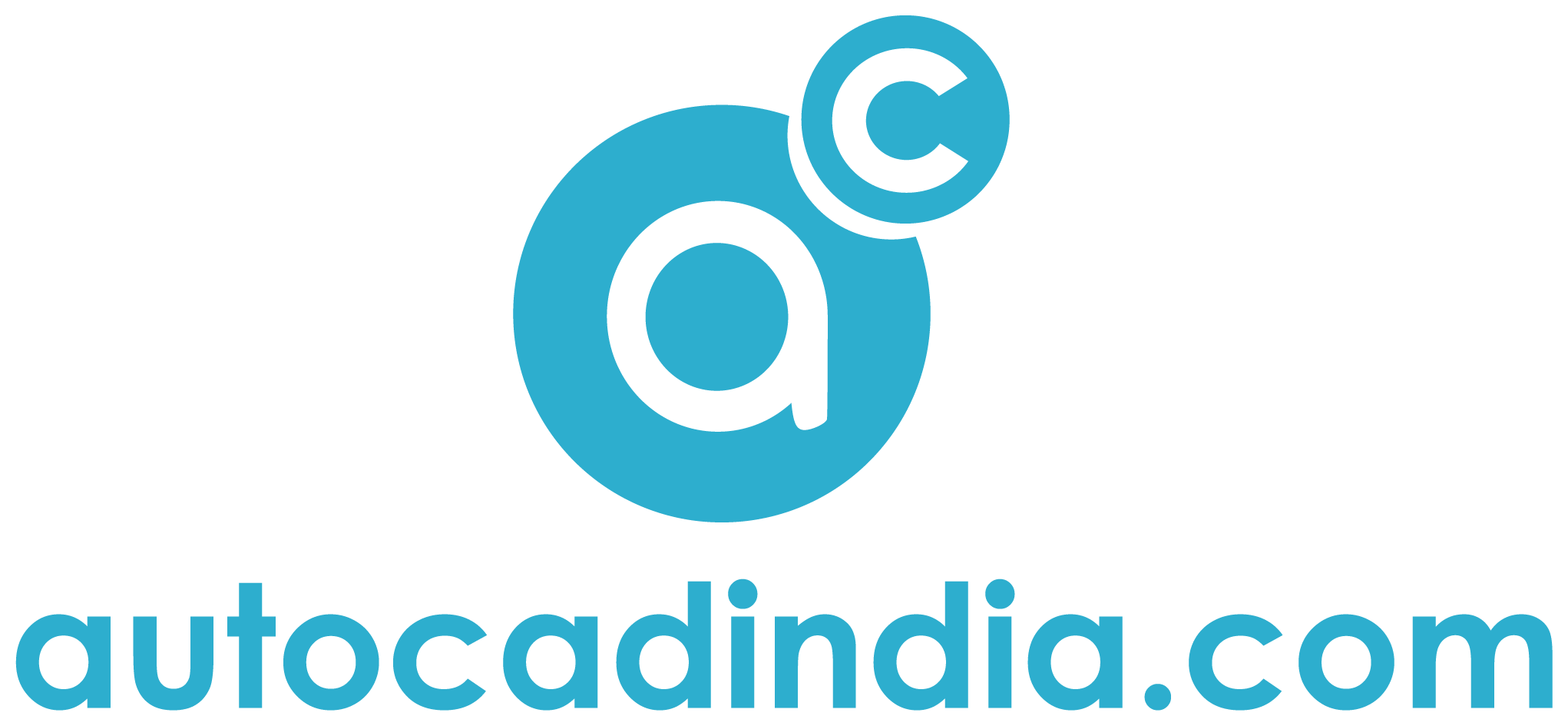How A 3D CAD Design Can Save You Time And Money?
- January 23, 2024
Today we are not going to talk about fantasy, but cold, hard savings in the business world. We’re talking about 3D CAD design – a digital sidekick that doesn’t do tricks but gets the job done.
In a world where time and money are the real MVPs, 3D CAD design steps up, quietly but powerfully. Forget the jargon; this is about making things clear, quick, and cost-effective. No need to imagine, because we’re diving into a world where complexity meets simplicity.
This isn’t about making sales only; it’s about precision, collaboration, and efficiency. Let’s unravel the impact of 3D CAD design without the fluff – just straightforward benefits for your business’s bottom line.
Let’s Start with 3D CAD Design

3D printing technology, also known as additive manufacturing, involves creating three-dimensional objects layer by layer from digital models. Several 3D printing processes are available. Each comes with unique features and applications.
One common method is Fused Deposition Modeling (FDM), where a filament is melted and deposited layer by layer to build the object.
Stereolithography (SLA) uses a liquid resin cured by ultraviolet light to create models. Selective Laser Sintering (SLS) uses a laser to fuse powdered material layer by layer. It brings versatility to materials like plastics and metals.
3D printing covers different industries. The 3D design offers rapid prototyping by generating complex components. Medical implants and prosthetics have the ideal use of 3D printing.
The architecture uses fine 3D models and prototypes. The automotive sector gets rapid prototyping and produces lightweight parts.
Additionally, 3D printing finds uses in education. Students visualize concepts and consumer goods for personalized products.
In terms of affordability and efficiency, it is a valuable tool for modern industries. It changes the way we design and manufacture objects.
How A 3d CAD Design Can Save You Time And Money?
Let’s imagine a scenario. You’re running a business. You can’t win if you lose against time, right? Now, meet 3D CAD design, the unsung hero that makes everything easier.
1) Precision in Design:
One of the primary advantages of 3D CAD design is its ability to provide precise and accurate representations of objects.
Unlike traditional 2D drawings, 3D models offer a comprehensive view. Designers can detect and rectify potential issues early in the design phase. This precision minimizes the likelihood of errors and rework, ultimately saving time and money.

2) Streamlined Collaboration:
You know that collaboration is key in any business setting. 3D CAD design facilitates seamless communication among team members, regardless of their physical locations. By having a digital model that can be easily shared and modified, teams can work together efficiently, reducing delays associated with traditional paper-based workflows.
Time-Saving Benefits of 3D CAD Design:
Yes! We have kept a separate section to describe the time-saving value of 3D CAD designs. Because we believe the benefits of 3D designs in this respect are huge. Let’s get the details below.
1) Rapid Prototyping:
In the past, creating physical prototypes was a time-consuming process. With 3D CAD design, however, the ability to generate virtual prototypes accelerates the product development cycle. This rapid prototyping allows for quick iterations and adjustments, significantly reducing the time needed to finalize a design.
2) Simulations and Testing:
3D CAD design enables simulations and testing in a virtual environment. Engineers can assess how a product will behave under different conditions without the need for physical prototypes. This expedites the testing phase and ensures that the final product meets performance standards from the outset.
Cost-Saving Benefits of 3D CAD Designs:
So, what about the cost-saving benefits of 3D? We have written the details below. Take a look.
1) Minimized Material Waste:
Traditional design processes often involve trial and error, leading to the production of multiple prototypes and iterations. 3D CAD design minimizes this need, resulting in reduced material waste. Precise digital models contribute to more accurate production planning, helping businesses save on raw materials and production costs.

2) Early Issue Detection:
Identifying design flaws early in the process is crucial for cost savings. 3D CAD design allows designers to detect and rectify potential issues before physical production begins. This proactive approach prevents costly rework and modifications later in the process, ultimately saving both time and money.
2D or 3D: Which One Do I Need?
Firstly, consider simplicity. If your business deals with straightforward visuals, 2D might suffice. It’s like drawing on paper but on a computer. Think logos, schematics, or simple illustrations.
On the other hand, if your business deals with products or spaces, 3D might be more fitting. It allows you to create lifelike digital models, giving a realistic preview of what you’re working on. It’s like crafting a digital version of your idea with depth.
Next, think about communication. If you need to convey ideas in a clear, flat manner, 2D might be the way to go. It’s like telling a simple story with pictures on a single plane.
Conversely, if you want to show a more detailed and realistic view of your product or project, 3D is the go-to. It’s like adding a new dimension to your storytelling, making it more engaging and detailed.
Consider collaboration too. If your team thrives with straightforward visuals, 2D might be simpler for everyone to understand. It’s like working with a basic puzzle where all the pieces fit on one layer.
However, if your projects require a more immersive understanding, 3D can provide a holistic view. It’s like putting together a puzzle in three dimensions, offering a fuller picture for your team.
Now, let’s talk about versatility. If your business mainly deals with static visuals, 2D is sufficient. It’s like having a set of building blocks; you can arrange them, but they stay on one plane.

Contrastingly, if your business involves dynamic elements or complex structures, 3D offers more flexibility. It’s like having an extra set of building blocks that you can stack, rotate, and arrange in various ways.
Lastly, think about cost. If your budget is tight, 2D design tools are often more affordable. It’s like getting the essentials without the extra frills.
Conversely, if you can invest a bit more, 3D design opens up possibilities for a more immersive experience. It’s like upgrading to a version that adds depth and realism to your visual toolbox.
Whether 2D or 3D is right for your business depends on your specific needs. If you seek simplicity and clear communication, 2D might be your go-to. However, if you want to add depth, detail, and immersion to your projects, 3D could be the better fit. Assess your goals, team dynamics, and budget to make the right choice for your business.
